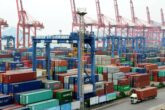December 31, 2024
Goodbye to Small Yard, High Fence
On Dec. 2, the United States announced a new round of export controls on advanced semiconductors to China, and more restrictions are expected soon. It was among the final pieces in an enduring legacy of the Biden administration: a significant expansion in the scale and scope of restricting China’s access to technology.
To explain this policy over the past two years, including this month’s announcement, the administration repeatedly turned to one metaphor: a small yard with a high fence. It means that sensitive technologies should be kept within a yard protected by a high fence of trade and investment controls. But the yard should be small, limited to a narrow set of advanced technologies with military applications, while broader commercial trade and investment with China would continue.
Will Mr. Trump’s more confrontational approach work better?
As the Biden administration enters its final days, the contradictions of this “small yard, high fence” strategy are piling up. It is an attempt to achieve two goals that are inherently in conflict — pursuing a fundamental shift in the geopolitics of technology competition without upending the global economic order. The administration is falling short on both of these objectives. When Donald Trump takes office, his foreign policy team is likely to take the technology control tools that the Biden team developed but was reluctant to employ broadly and to unleash them at full force, resulting in significant economic disruption. So much for that manicured small yard.
The idea behind the “small yard, high fence” strategy made sense at first and reflected the Biden administration’s attempt to balance competing pressures in its relationship with China: the need to maintain, as the national security adviser, Jake Sullivan, put it, “as large of a lead as possible” over its primary strategic rival in foundational technology without severing all meaningful economic links.
Read the full article on The New York Times.
More from CNAS
-
Red Lines and Supply Chains: Trump’s Approach to Trade and Security
The Trump administration is increasingly linking trade policy to national security. Join Emily Kilcrease, senior fellow and director of the Energy, Economics, and Security Pro...
By Emily Kilcrease
-
Ziemba: Struck By Energy Deal Between India & Saudi Arabia
Saudi Arabia and India have agreed to deepen energy ties and cooperate more closely on tourism and technology as the countries seek to strengthen relations at a time of turbul...
By Rachel Ziemba
-
What is President Trump’s Economic Plan?
Global financial markets plunged as investors braced themselves for a shock to the flow of international trade. Faced with prolonged market turmoil, within days the US Preside...
By Emily Kilcrease
-
Bloomberg Businessweek: Age of Economic Warfare
Columbia University Senior Research Scholar and adjunct senior fellow at the Center for a New American Security, Edward Fishman on US credibility and how that is affecting its...
By Edward Fishman





As the Biden administration introduced a series of new trade and investment controls to curtail China’s acquisition of advanced technologies, it has repeatedly turned to a familiar metaphor: a small yard with a high fence. In a new Guest Essay for the New York Times, Geoffrey Gertz assesses the contradictions and limitations of this strategy to limit access to certain sensitive technologies without upending the broader U.S-China economic relationship. With the Trump administration preparing to return to power, it is likely to abandon the constraints of a “small yard” and deploy the toolkit the Biden team developed at full force, resulting in significant economic disruption.